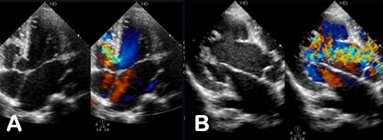Device Closure of Small Ventricular Septal Defects: When and Why?
Abstract
Ventricular septal defect (VSD) accounts for approximately 20-30 % of all forms of congenital heart disease (CHD). They were traditionally closed surgically in the past. The surgery though safe carries the risk of morbidity, complete heart block, wound infection and thoracotomy scar on the chest. On weighing the risk and benefit, the small VSDs were not submitted to surgery in the past. So for many years it has been taught that the small VSDs are to be left alone and surgery is not recommended. Many clinicians believed in spontaneous closure of VSDs. Hence they advised the parents to wait for spontaneous closure till the child is 9 years old.But what if the VSD does not close by 10 years is the question. Are they normal as grown up congenital heart(GUCH). The Jane Somerville GUCH unit showed that spontaneous closure occurred only in 10% between the ageof 17 and 45 (mean - 27) years in small VSDs in adults.What is worth noting is about 25% had serious complications:infective endocarditis (11%), progressive aortic regurgitation (5%), age-related symptomatic arrhythmias (8·5%) like atrial fibrillation.1This means that asymptomatic small VSDs in childhood is not necessarily benign during adult life. This raises the question, when we have a safe non-surgical device closure available to close the small VSDs, should we put the future lives of the young in danger by not giving the benefit of technology to them?
Published
2014-07-01
How to Cite
VIJAYALAKSHMI, IB.
Device Closure of Small Ventricular Septal Defects: When and Why?.
BMH Medical Journal - ISSN 2348–392X, [S.l.], v. 1, n. 3, p. 56-63, july 2014.
ISSN 2348-392X.
Available at: <https://www.babymhospital.org/BMH_MJ/index.php/BMHMJ/article/view/33>. Date accessed: 18 apr. 2024.
Section
Point of View

